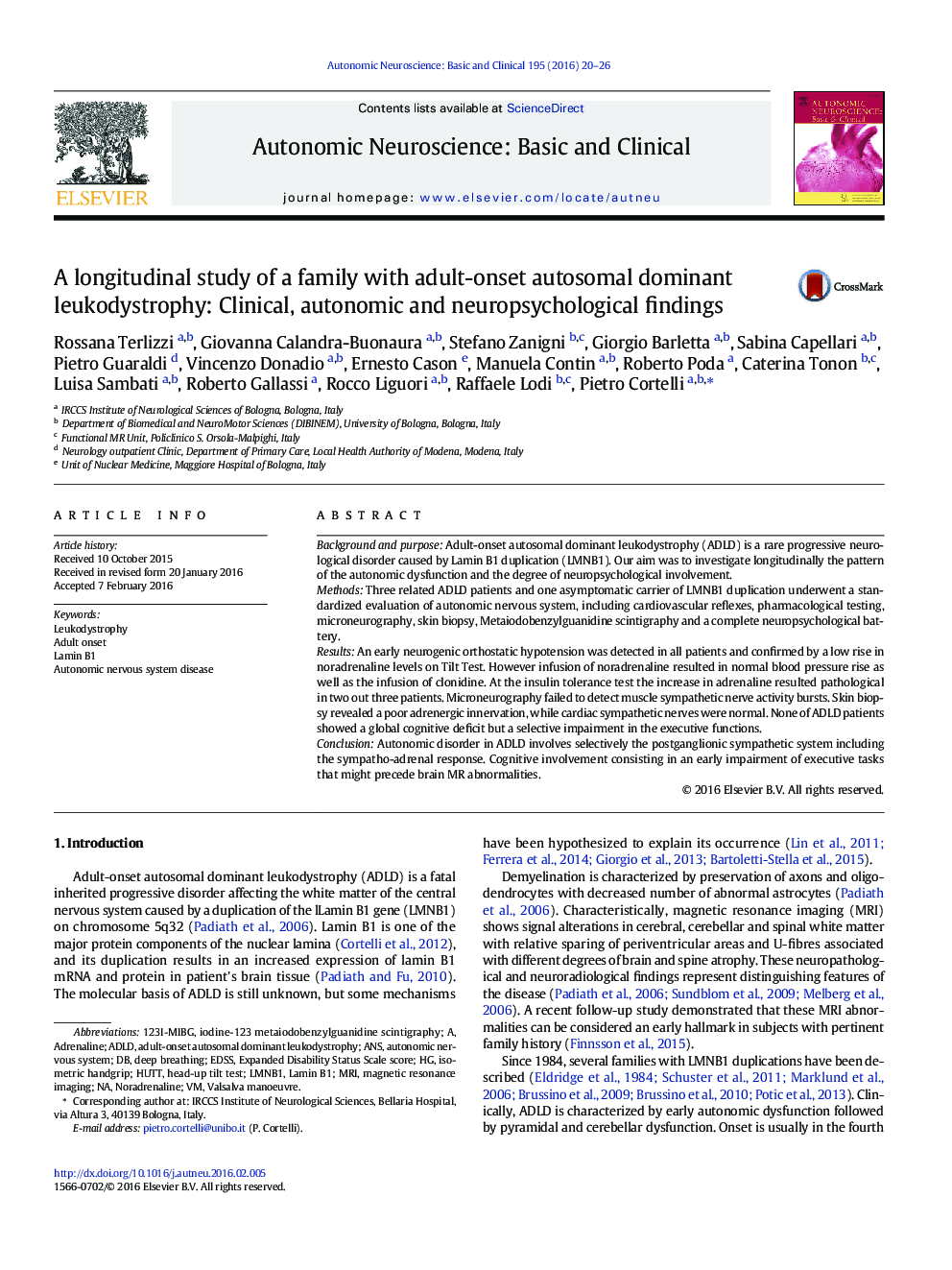| Article ID | Journal | Published Year | Pages | File Type |
|---|---|---|---|---|
| 3034471 | Autonomic Neuroscience | 2016 | 7 Pages |
•Autonomic disorder in ADLD involves the postganglionic-sympathetic system including the sympatho-adrenal response.•Morphological changes were demonstrated by an extra cardiac sympathetic degeneration.•Cognitive involvement consisting in a selective and early impairment of executive tasks.
Background and purposeAdult-onset autosomal dominant leukodystrophy (ADLD) is a rare progressive neurological disorder caused by Lamin B1 duplication (LMNB1). Our aim was to investigate longitudinally the pattern of the autonomic dysfunction and the degree of neuropsychological involvement.MethodsThree related ADLD patients and one asymptomatic carrier of LMNB1 duplication underwent a standardized evaluation of autonomic nervous system, including cardiovascular reflexes, pharmacological testing, microneurography, skin biopsy, Metaiodobenzylguanidine scintigraphy and a complete neuropsychological battery.ResultsAn early neurogenic orthostatic hypotension was detected in all patients and confirmed by a low rise in noradrenaline levels on Tilt Test. However infusion of noradrenaline resulted in normal blood pressure rise as well as the infusion of clonidine. At the insulin tolerance test the increase in adrenaline resulted pathological in two out three patients. Microneurography failed to detect muscle sympathetic nerve activity bursts. Skin biopsy revealed a poor adrenergic innervation, while cardiac sympathetic nerves were normal. None of ADLD patients showed a global cognitive deficit but a selective impairment in the executive functions.ConclusionAutonomic disorder in ADLD involves selectively the postganglionic sympathetic system including the sympatho-adrenal response. Cognitive involvement consisting in an early impairment of executive tasks that might precede brain MR abnormalities.
